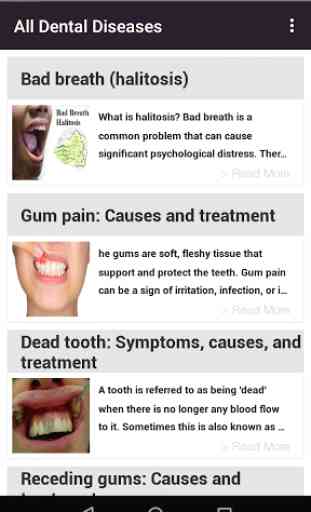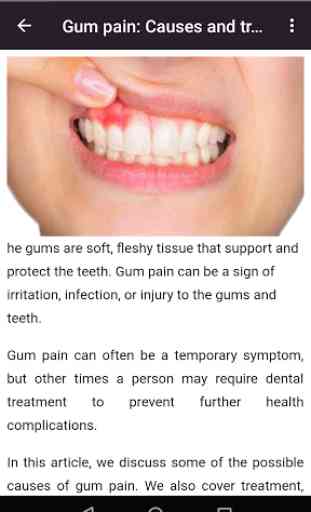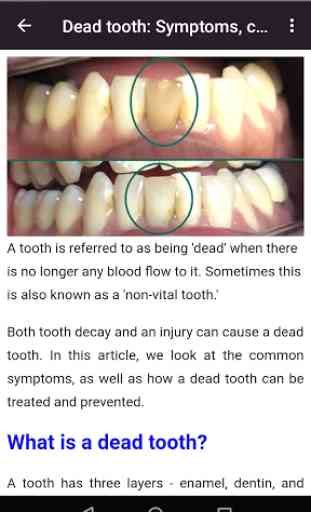Dental Diseases
Your teeth are made of a pebble-like material. Inside the tooth, there are nerves and blood vessels. Your teeth need many activities that you can take for granted. These include eating, chatting and even smiling. But dental problems are not a subject to smile. They include problems such as tooth decay (also known as tooth decay), infections and injuries.
Our mouths are full of bacteria. These bacteria, along with mucus and other particles, constantly form a sticky, colorless “plaque” on teeth. Brushing and flossing help get rid of plaque. Plaque that is not removed can harden and form “tartar” that brushing doesn’t clean. Only a professional cleaning by a dentist or dental hygienist can remove tartar.
There are a number of risk factors for gum disease, but smoking is the most significant. Smoking also can make treatment for gum disease less successful. Other risk factors include diabetes; hormonal changes in girls and women; diabetes; medications that lessen the flow of saliva; certain illnesses, such as AIDS, and their medications; and genetic susceptibility.
Symptoms of gum disease include:
Bad breath that won’t go away
Red or swollen gums
Tender or bleeding gums
Painful chewing
Loose teeth
Sensitive teeth
Receding gums or longer appearing teeth
At a dental visit, a dentist or dental hygienist will:
Examine your gums and note any signs of inflammation.
Use a tiny ruler called a “probe” to check for and measure any pockets around the teeth. In a healthy mouth, the depth of these pockets is usually between 1 and 3 millimeters. This test for pocket depth is usually painless.
Ask about your medical history to identify conditions or risk factors (such as smoking or diabetes) that may contribute to gum disease.
The dental professional may also:
Take an x-ray to see whether there is any bone loss.
Refer you to a periodontist. Periodontists are experts in the diagnosis and treatment of gum disease and may provide you with treatment options that are not offered by your dentist.
Treatment
The main goal of treatment is to control the infection. The number and types of treatment will vary, depending on the extent of the gum disease. Any type of treatment requires that the patient keep up good daily care at home. The dentist may also suggest changing certain behaviors, such as quitting smoking, as a way to improve your treatment results.
If your mouth or jaw hurt, it could be from a toothache. Toothaches usually indicate a cavity but they can also signal gum disease. In some cases, a toothache is a sign of an abscess or impacted tooth. A toothache should be evaluated by a dentist right away to determine the cause of the problem and prevent the tooth from dying.
If your teeth hurt when you drink hot or cold beverages, you may have sensitive teeth. This can be the result of tooth decay, fractured teeth, worn fillings, gum disease, worn tooth enamel or an exposed tooth root due to gum recession. Treatment will depend on the source of sensitivity. If you’re concerned about the sensitivity of your teeth see your dentist for diagnosis and treatment options.
Bleeding or sore gums can be a sign of gingivitis, an early and reversible stage of gum disease, or simply the result of brushing too hard or starting a new flossing routine. If your gums bleed regularly, or enough to worry you, make an appointment with your dentist or physician, it could be a sign that something else is wrong.
Our mouths are full of bacteria. These bacteria, along with mucus and other particles, constantly form a sticky, colorless “plaque” on teeth. Brushing and flossing help get rid of plaque. Plaque that is not removed can harden and form “tartar” that brushing doesn’t clean. Only a professional cleaning by a dentist or dental hygienist can remove tartar.
There are a number of risk factors for gum disease, but smoking is the most significant. Smoking also can make treatment for gum disease less successful. Other risk factors include diabetes; hormonal changes in girls and women; diabetes; medications that lessen the flow of saliva; certain illnesses, such as AIDS, and their medications; and genetic susceptibility.
Symptoms of gum disease include:
Bad breath that won’t go away
Red or swollen gums
Tender or bleeding gums
Painful chewing
Loose teeth
Sensitive teeth
Receding gums or longer appearing teeth
At a dental visit, a dentist or dental hygienist will:
Examine your gums and note any signs of inflammation.
Use a tiny ruler called a “probe” to check for and measure any pockets around the teeth. In a healthy mouth, the depth of these pockets is usually between 1 and 3 millimeters. This test for pocket depth is usually painless.
Ask about your medical history to identify conditions or risk factors (such as smoking or diabetes) that may contribute to gum disease.
The dental professional may also:
Take an x-ray to see whether there is any bone loss.
Refer you to a periodontist. Periodontists are experts in the diagnosis and treatment of gum disease and may provide you with treatment options that are not offered by your dentist.
Treatment
The main goal of treatment is to control the infection. The number and types of treatment will vary, depending on the extent of the gum disease. Any type of treatment requires that the patient keep up good daily care at home. The dentist may also suggest changing certain behaviors, such as quitting smoking, as a way to improve your treatment results.
If your mouth or jaw hurt, it could be from a toothache. Toothaches usually indicate a cavity but they can also signal gum disease. In some cases, a toothache is a sign of an abscess or impacted tooth. A toothache should be evaluated by a dentist right away to determine the cause of the problem and prevent the tooth from dying.
If your teeth hurt when you drink hot or cold beverages, you may have sensitive teeth. This can be the result of tooth decay, fractured teeth, worn fillings, gum disease, worn tooth enamel or an exposed tooth root due to gum recession. Treatment will depend on the source of sensitivity. If you’re concerned about the sensitivity of your teeth see your dentist for diagnosis and treatment options.
Bleeding or sore gums can be a sign of gingivitis, an early and reversible stage of gum disease, or simply the result of brushing too hard or starting a new flossing routine. If your gums bleed regularly, or enough to worry you, make an appointment with your dentist or physician, it could be a sign that something else is wrong.
Category : Books & Reference

Related searches
Reviews (8)
Eud. E.
May 12, 2019
this app is not that much detailed and its somehow kind of boring...
Bwa. G.
Oct 3, 2019
Very nice app self explanatory thanks developer
ric. l. j.
May 20, 2019
great help me out a lot
Far. A. D.
Apr 22, 2020
But is not all dental diseases.
Moh. A.
Apr 8, 2020
It dosent cover all diseases
Ami. K.
Feb 21, 2020
Outstanding
ara. s. l.
Jan 31, 2020
Thanks you





App crashes regularly while open it.